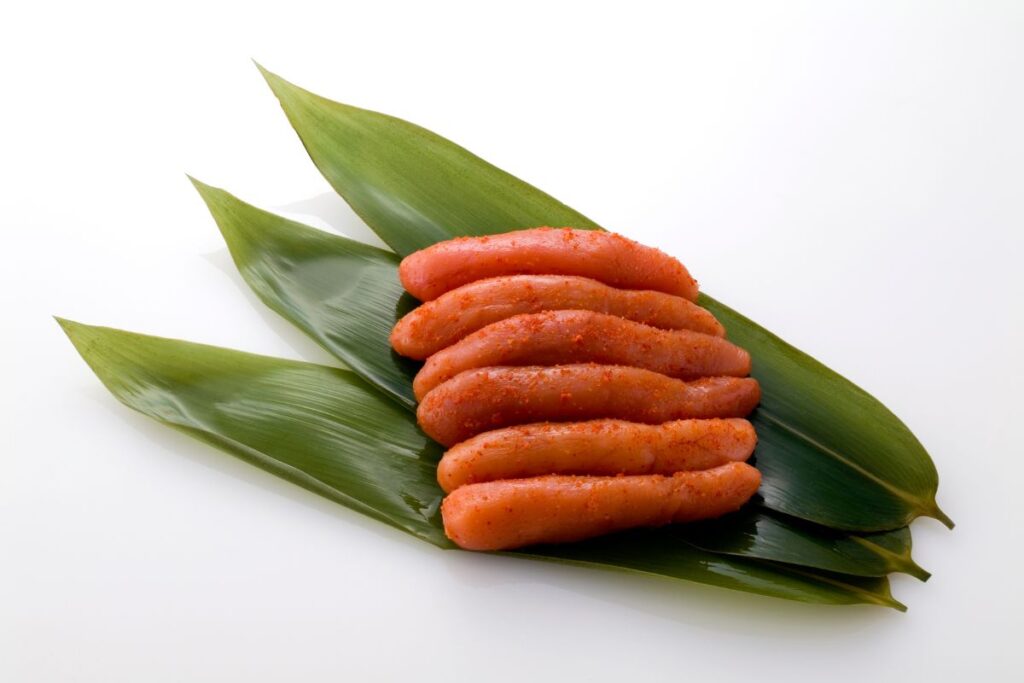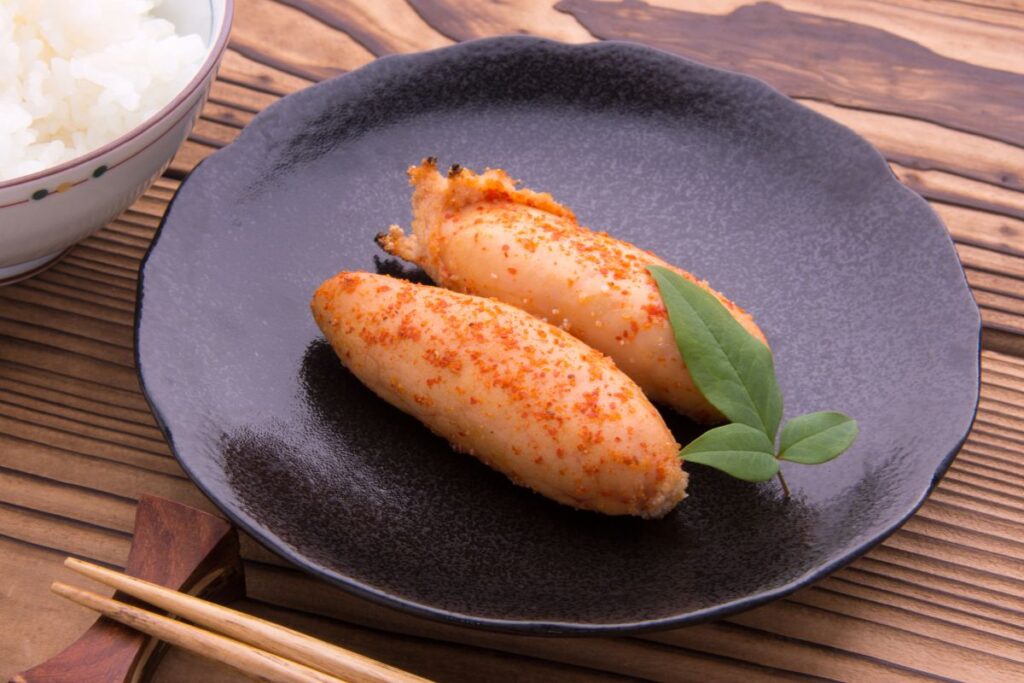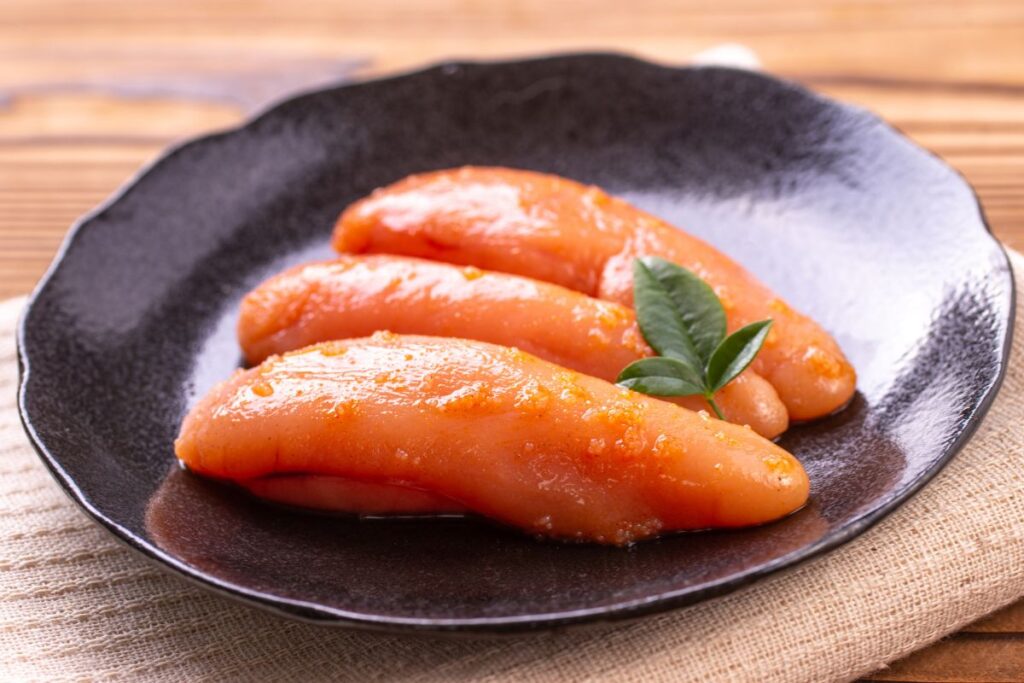Get ready for a flavor-packed adventure as we explore tarako and mentaiko, two iconic types of cod roe that have won over foodies globally.
Think of this as your culinary Marco Polo expedition, where every bite is an exploration of rich flavors and captivating tales. These delights are sure to leave you hungry for more!
From the icy depths of the North Pacific to the diverse kitchens of global cuisine, tarako and mentaiko have carved a place for themselves as indispensable ingredients.
Whether you’re a seasoned food enthusiast or a curious newcomer, join us as we explore their origins, their versatile uses in cooking, their distinct flavor profiles, their health benefits, and the cultural impact they’ve had over centuries.
Dive into the spicy and savory world of tarako and mentaiko, and discover why they continue to reign supreme across generations and borders.
Let your taste buds be your guide as we unravel the secrets behind these culinary gems.


Origins and History of Tarako and Mentaiko
The journey of tarako and mentaiko begins in Japan, where these varieties of seasoned cod roe have been an integral part of culinary traditions for centuries. You’re stepping into a realm where mastery over ingredients transforms simple elements into revered delicacies.
Tarako, the salted but not spiced roe, offers a subtly briny flavor, while mentaiko takes it up a notch with its spicy marination, creating a bold taste experience.
You wield the power to elevate your dishes with these ingredients, understanding their origins is key to utilizing them effectively. Historically, tarako was enjoyed for its simplicity and nutritional value, often served with rice or incorporated into various Japanese dishes.
Mentaiko, introduced to Japan from Korea, underwent a transformation, adopting a Japanese culinary flair that made it a beloved component in meals, adding a spicy kick that tantalizes the palate.
Embrace this knowledge to make informed choices in your culinary ventures. Whether you’re experimenting with new recipes or adding a twist to traditional dishes, the history of tarako and mentaiko equips you with the insight needed to impress and satisfy.
Control the narrative of your dining experience by integrating these flavors, paying homage to their rich history while crafting meals that resonate with modern tastes.
Culinary Uses
Diving into their culinary uses, you’ll find that tarako and mentaiko can transform ordinary dishes into extraordinary culinary experiences. You’ve got the power to elevate your meals with these versatile ingredients.
By incorporating tarako or mentaiko, you’re not just adding flavor; you’re also infusing your dishes with a distinctive texture that’s hard to replicate with any other ingredient.
You’ll want to start simple. Mix tarako or mentaiko with warm rice for a quick, flavorful meal. It’s a straightforward dish, but the complexity of flavors you’ll unlock is astounding.
For those seeking a bit more creativity, consider folding them into pasta. The creamy texture of the roe, combined with the al dente pasta, creates an irresistible dish that’s both comforting and upscale.
Don’t stop there, though. You’re in control, and the possibilities are endless. Use them as toppings on crackers or sliced cucumbers for an instant appetizer. Or, blend them into sauces to add a rich, umami depth to your seafood dishes.
Flavor Profiles
Exploring the flavor profiles of tarako and mentaiko, you’ll uncover a savory depth that truly sets these ingredients apart. Tarako, with its subtly sweet undertone, pairs perfectly with the briny essence of the sea.
This delicate balance offers a unique taste experience that’s both refreshing and comforting. You’ll find it enhances dishes without overwhelming them, providing a nuanced complexity that’s hard to replicate.
On the other hand, mentaiko introduces a spicy kick that elevates its salty, umami-packed base. This combination doesn’t just add flavor; it transforms your meal, giving you the power to adjust the intensity to suit your palate.
Whether you’re looking to add a gentle warmth or a bold statement to your dish, mentaiko’s versatility has you covered.
Both tarako and mentaiko offer rich flavors that invite experimentation. As you explore their culinary potential, you’ll discover that controlling their intensity allows you to tailor dishes to your exact taste preferences.
This isn’t just cooking; it’s an art form where you’re the artist, and these ingredients are your palette. Dive in, and let your creativity lead the way to unforgettable meals.


Health Benefits of Tarako and Mentaiko
While you’ve been experimenting with the rich flavors of tarako and mentaiko, you mightn’t have realized the impressive health benefits these ingredients offer. Packed with high-quality protein, they’re an excellent choice for maintaining muscle mass and overall bodily functions.
Moreover, the omega-3 fatty acids found in these roes play a crucial role in heart health, potentially reducing the risk of heart disease. You’re also getting a good dose of B vitamins, essential for energy production and maintaining optimal brain function.
Integrating tarako and mentaiko into your diet means you’re taking control of your nutritional intake without sacrificing flavor. These ingredients are low in carbohydrates, making them an ideal fit for those monitoring their carb consumption.
Plus, the anti-inflammatory properties of omega-3s can help manage chronic conditions, giving you an edge in your health management strategy.
Cultural Impact
Tarako and mentaiko have deeply influenced various culinary traditions, becoming integral to many cultural dishes around the world. You’ll find these cod roe varieties enhancing flavors and adding unique textures, from Japanese cuisine to global fusion dishes.
As you explore their impact, you’ll notice how they’ve been seamlessly incorporated into everyday meals, offering a glimpse into the adaptability and widespread appeal of these ingredients.
In Japan, tarako and mentaiko have cemented their place in the culinary landscape. You’ll see them served with rice, in pasta, and even as a filling for onigiri, showcasing their versatility. But their influence doesn’t stop there.
Internationally, chefs are embracing these ingredients, using them to add depth and complexity to their creations. You’re now as likely to find mentaiko spicing up a plate of spaghetti in an Italian restaurant as you’re in a traditional Japanese eatery.
Embracing tarako and mentaiko allows you to take control of your culinary adventures, infusing dishes with bold flavors and textures. You have the power to experiment and discover how these ingredients can transform the simplest meals into something extraordinary.
Their cultural impact is a testament to their versatility and enduring appeal, inviting you to explore and integrate them into your own cooking repertoire.
Conclusion
So, you’ve journeyed through the spicy and savory world of tarako and mentaiko, from their rich origins to their versatile culinary uses. You’ve savored their unique flavor profiles and even uncovered their health benefits.
Beyond just being a treat for your taste buds, these cod roe varieties have left a lasting impact on culture, intertwining tradition with modern dining.
But wait! There’s always another side to the story. Some may argue that tarako and mentaiko are an acquired taste, with their strong and distinctive flavors not appealing to everyone. They might argue that other seafood options offer a more universally enjoyable experience.
What do you think? Have you had the chance to try tarako or mentaiko? We’d love to hear your thoughts in the comments below. And if you haven’t had the chance yet, why not give it a go and let us know what you think?
Happy cooking!




Konnichiwa! (Hello!) I'm Pat Tokuyama, a Japanese tofu cookbook author, who travels for music, food, and adventure. If you like Japanese tea, checkout some of the newestorganic japanese tea, matcha bowls and noren and more!
** Curious about the Plant Based Japanese Cooking Club? ** Learn more here!